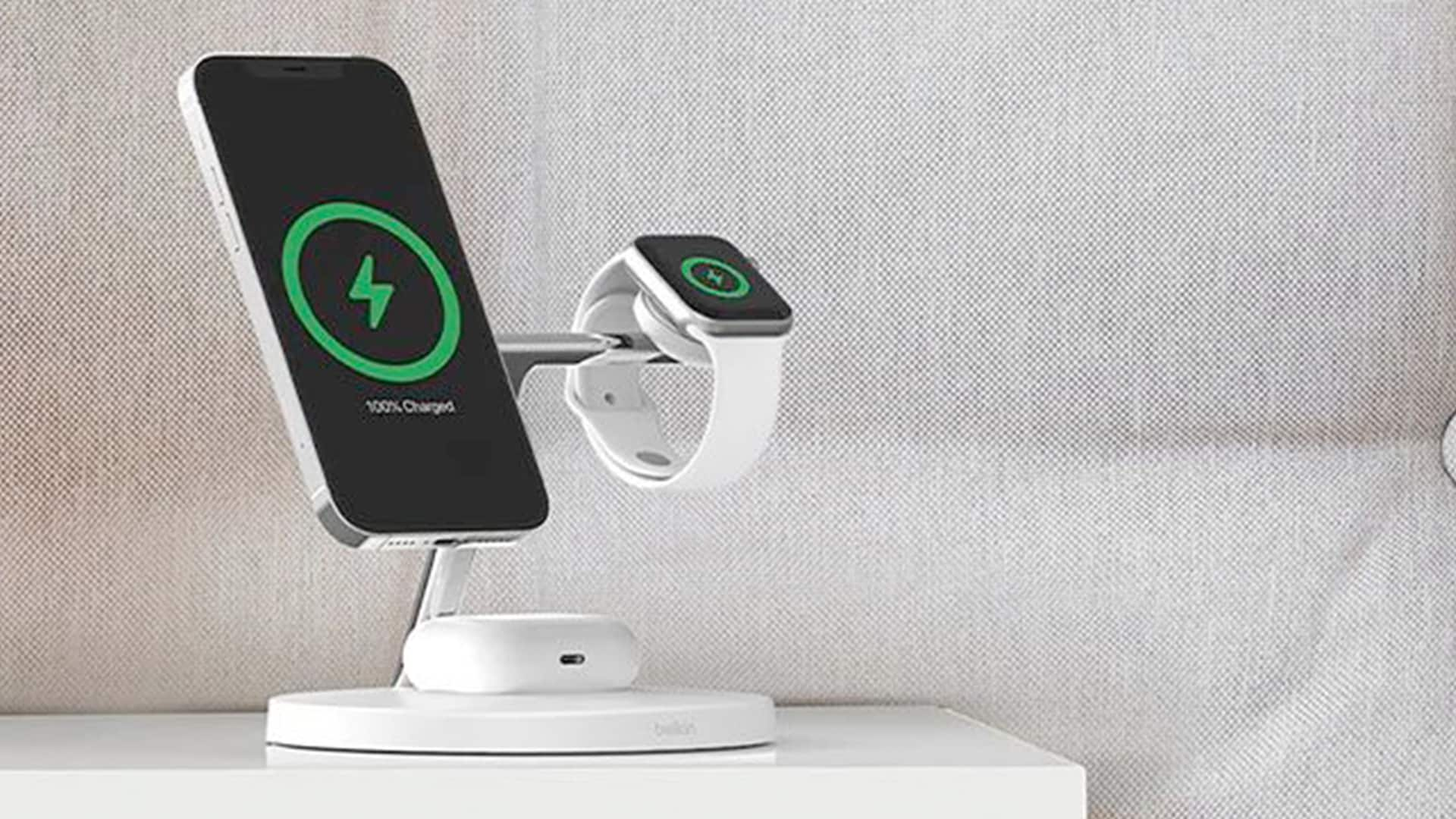List Of Contents
Wireless charging, a technology that has been steadily gaining popularity, offers a convenient and efficient way to power up your devices without the need for cables. For iPhone users, this advancement has significantly improved the charging experience, providing both ease and functionality. In this article, we will explore the concept of wireless charging for iPhones, its benefits, the technology behind it, and how to optimize its use.
The Evolution of Wireless Charging
.jpg)
Wireless charging, also known as inductive charging, has evolved significantly over the years. The technology utilizes electromagnetic fields to transfer energy togelup between two objects, typically a charging pad and a compatible device. Apple introduced wireless charging for iPhones with the release of the iPhone 8, iPhone 8 Plus, and iPhone X in 2017. Since then, every subsequent iPhone model has supported this feature, making it a standard convenience for users.
Moreover, wireless charging technology has seen improvements in efficiency and speed. Early versions were slower compared to traditional wired charging, but advancements have narrowed this gap considerably. The introduction of the Qi (pronounced “chee”) standard, adopted by most smartphone manufacturers including Apple, has facilitated compatibility and standardization across devices.
How Wireless Charging Works
Understanding the mechanics of wireless charger can help users appreciate its benefits. The process begins with a charging pad or stand connected to a power source. This pad contains a coil that generates an electromagnetic field when an electric current passes through it. The iPhone, which also contains a coil, receives this electromagnetic energy and converts it back into electrical energy to charge the battery.
Additionally, the alignment of the coils in the charging pad and the iPhone is crucial for efficient energy transfer. Manufacturers design charging pads to be intuitive, ensuring that users can easily place their devices in the optimal position. Some advanced charging pads even feature multiple coils to provide a larger charging area, reducing the need for precise placement.
Benefits of Wireless for iPhone

Wireless charging offers numerous benefits that enhance the user experience. First and foremost, it eliminates the need for cables, reducing clutter and simplifying the charging process. Users can simply place their iPhone on a charging pad without fumbling with connectors or ports.
Furthermore, wireless charging reduces wear and tear on the iPhone’s charging port, potentially extending the device’s lifespan. Repeatedly plugging and unplugging cables can cause damage over time, but wireless charging mitigates this issue. It also provides a more seamless experience in public spaces, such as cafes and airports, where wireless charging stations are increasingly common.
In addition, wireless charging supports simultaneous charging of multiple devices. Many charging pads are designed to accommodate more than one device at a time, allowing users to charge their iPhone, Apple Watch, and AirPods concurrently. This multi-device capability is particularly convenient for users who rely on multiple gadgets throughout their day.
Optimizing Wireless Charging Efficiency
To make the most of wireless charging, users can follow several tips to optimize efficiency and speed. Firstly, using a high-quality charging pad that supports fast charging is essential. Apple’s MagSafe chargers, for instance, provide up to 15W of power, significantly improving charging speed compared to standard Qi chargers.
Moreover, ensuring proper alignment between the iPhone and the charging pad is crucial. While many pads are designed to simplify this process, taking a moment to check alignment can enhance charging efficiency. Removing thick or metal cases can also improve performance, as they may interfere with the electromagnetic field.
Additionally, keeping the charging pad and iPhone cool can prevent overheating, which can slow down the charging process. Placing the charging pad in a well-ventilated area and avoiding direct sunlight can help maintain optimal temperatures. Regularly cleaning the charging pad and the back of the iPhone can also prevent dirt and dust from affecting charging efficiency.
Common Misconceptions about Wireless Charging

Despite its benefits, wireless charging is often surrounded by misconceptions. One common myth is that wireless charging is slower than wired charging. While early versions of the technology were indeed slower, advancements have made wireless charging speeds comparable to, and in some cases faster than, traditional methods. Using a high-quality charging pad and a compatible power adapter can maximize charging speed.
Another misconception is that wireless charging can damage the iPhone’s battery. In reality, wireless charging is designed to be safe and efficient. The Qi standard includes safety features such as temperature control and foreign object detection to protect the device and ensure optimal charging conditions.
Additionally, some users believe that wireless charging is less energy-efficient than wired charging. However, the difference in energy consumption is minimal, and the convenience offered by wireless charging often outweighs this slight variation. By using energy-efficient chargers and placing the iPhone correctly on the pad, users can minimize any potential energy loss.
Future of Wireless Charging
The future of wireless charging looks promising, with ongoing advancements poised to make the technology even more efficient and accessible. One exciting development is the concept of true wireless charge, which aims to eliminate the need for direct contact between the device and the charging pad. This technology, still in its early stages, could allow devices to charge wirelessly from a distance, providing even greater convenience.
Moreover, integration of wireless charging into everyday objects and surfaces is becoming more common. Furniture with built-in wireless charger pads, for instance, can transform desks and tables into convenient charging stations. This seamless integration can further simplify the charging process and reduce reliance on traditional power outlets.
In addition, improvements in charging speed and efficiency will continue to enhance the user experience. As battery technology evolves, wireless charging may become even faster and more reliable, meeting the growing demands of modern devices.
Choosing the Right Wireless Charger for Your iPhone
Selecting the right wireless charger for your iPhone is crucial for optimizing the charging experience. Apple’s MagSafe chargers are specifically designed for iPhones, offering magnetic alignment for optimal efficiency and speed. However, many third-party chargers also provide excellent performance and additional features.
When choosing a wireless charger, consider factors such as charging speed, design, and compatibility with other devices. Reading reviews and checking for certifications like Qi compliance can help ensure that the charger meets your needs and expectations. Investing in a high-quality charger can provide long-term benefits and enhance the convenience of wireless charger
Also read other interesting articles about Lalu Muhammad Zohri: Kebanggaan Indonesia di Dunia Atletik 2024 here

